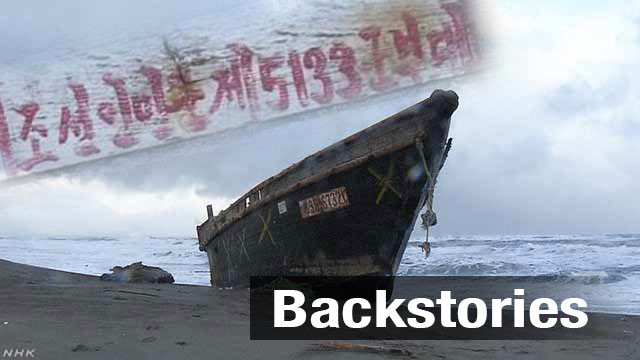It has been long established that these boats come from North Korea. But little is known about why these vessels set out to sea, and what happened to everyone on board. I decided to visit one of the boats and uncover the truth.
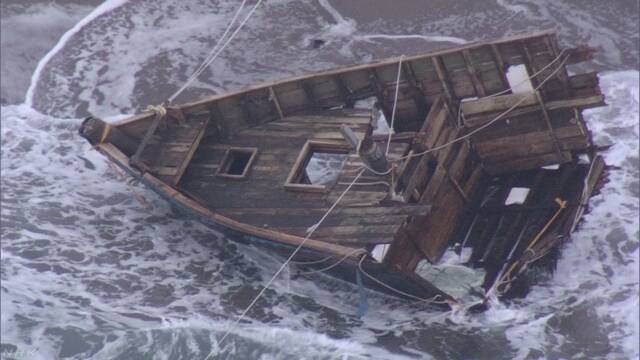
Looking for clues
I am currently posted in Aomori Prefecture, where 85 such boats were found in the five-year period starting in 2015. The Japan Coast Guard says, in total, 484 ships were found in the country during this period, including 144 last year.
I recently went to see one of these boats in Tsugaru City, based on information from a Coast Guard press release.
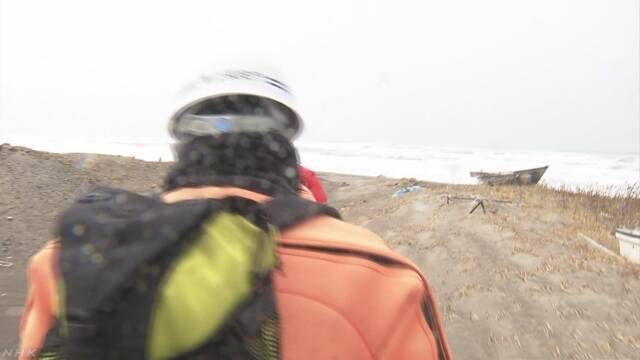
When I got to the city, I had to walk along the beach for about 30 minutes. There was a biting wind whipping across the bleak coastline. Eventually, the boat came into view.
In my mind, I had imagined a small vessel, a tiny fishing boat suited for a crew of three or four. But what I saw was quite large, nearly two meters high and fourteen meters long.
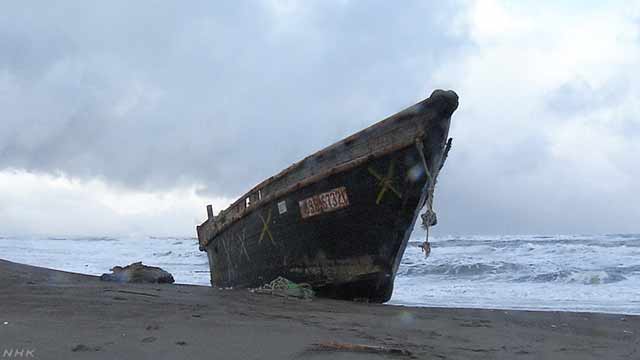
In terms of design, the boat seemed to have been crudely assembled. Wooden boards were nailed into the side, presumably as quick fixes for leaks. I walked around, looking for clues as to the origin. All I could find was a series of red numbers on the hull: 598-67321. Could this be an ID of some form?
Inside the ship
With nothing to be gleaned from the exterior, I resolved to go on board. I called the municipal office and the Coast Guard, asking both for permission to go inside. Both said it was fine.
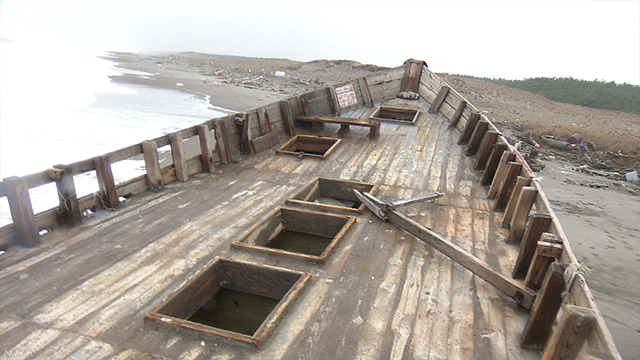
The deck felt unnaturally empty. Seaweed was growing from several places. It didn't seem like a place where humans had once spent time. The only sounds were those of the wind and waves.
There was no steering house, no items lying around, most likely because everything had been washed away as the ship drifted at sea. But there were several large holes that gave a look at what lay below.
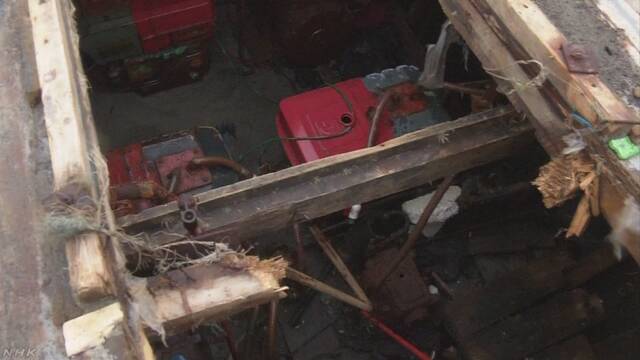
Inside, I made out what appeared to be a generator. There were also some Chinese characters. Peering into another hole, I saw some Hangul characters on the inside of the port bow.
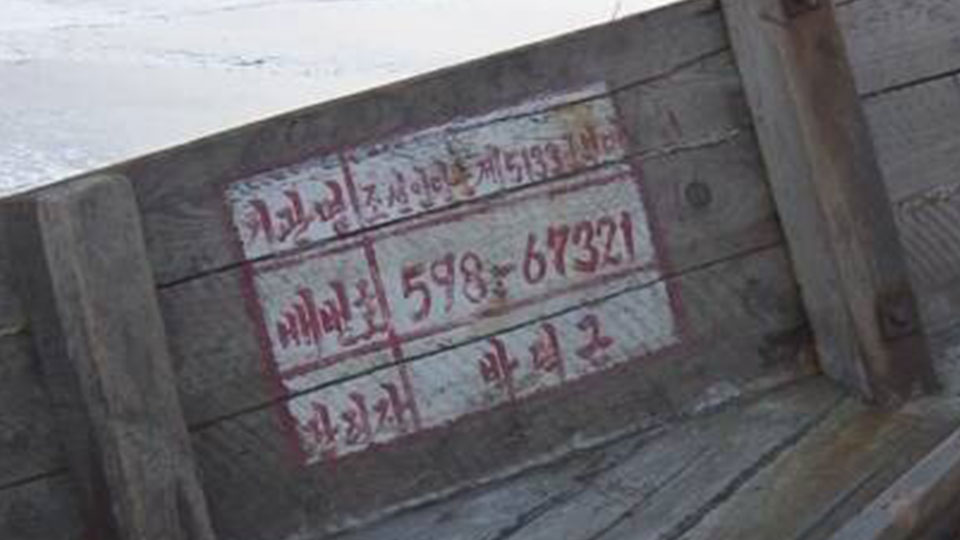
The writing indicated that the boat belonged to the 5133th unit of the Korean People's Army. The name of the administrator was also included.

Professor Satoru Miyamoto, a North Korea specialist at Seigakuin University, says it is likely that farmers from the North take these boats out on fishing trips, to make a little extra cash after their crops go out of season.
"North Korea bans people from setting up their own firms and operating businesses, such as fishing," Miyamoto says. "But they can get approval if they belong to some organization. For example, a military unit, a state-owned firm, or even a school. They are then obliged to pay a certain amount of money or part of their profits to that organization."
I wondered what would happen if a farmer, with little seafaring experience, went out fishing. Would they know what to do if there was engine trouble, for example? It seemed possible that they would simply let their ships drift, ending up in Japan.
What happened to everyone aboard?
In some cases, people have still been on board when these ships have ended up in Japan. But these are rare cases. Most of the time, the ships have long been empty.
Professor Miyamoto says crewmembers are sometimes thrown overboard, unable to hang on during stormy conditions. He says he believes some are rescued by other boats.
But in some cases, the farmers are less fortunate. Last December, a boat washed ashore on the coast of Sado Island carrying several bodies. The Coast Guard says that over the three-year period ending in 2019, a total of 54 people have been found dead on such boats.
Sai Village on the tip of Shimokita Peninsula in Aomori has been the site of two such incidents. In 2015, a boat carrying four bodies drifted ashore. Another boat with the same number of bodies was found in 2017. None of the eight have been identified, no one has come forward to retrieve their bodies.
A municipal report on the 2015 incident says that one of the bodies was clothed in a sweatshirt with a North Korea tag.
Meanwhile, a report on the 2017 incident says one of the bodies was wearing a badge of Kim Il Sung, the grandfather of current leader Kim Jong Un.

A notice in the report said: "The village has cremated the bodies and kept the ashes. Please contact if you think you might know these person."
Sai Village officials say they handed over the remains of the four people from the 2015 boat to the General Association of Korean Residents in Japan.
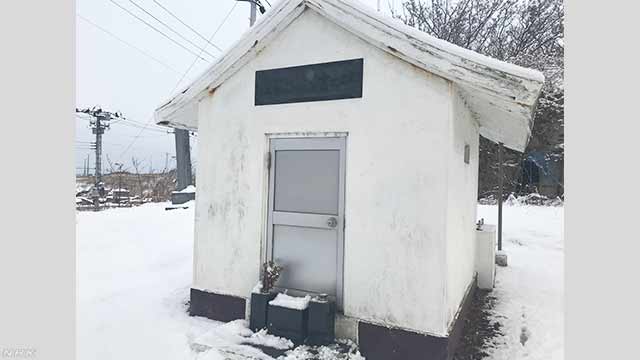
But the ashes of the four people found in 2017 are still kept at a temple in the village. The chief priest, Shinichi Yoshida, told me that officials and others gather at the temple during the Bon Festival and chant a prayer for the group.
I thought about the bitter cold of the beach in Tsugaru City, and how the people on board probably just wanted to get back home. It was a thought that felt incompatible with the typical excitement at the stories about these mysterious boats.
